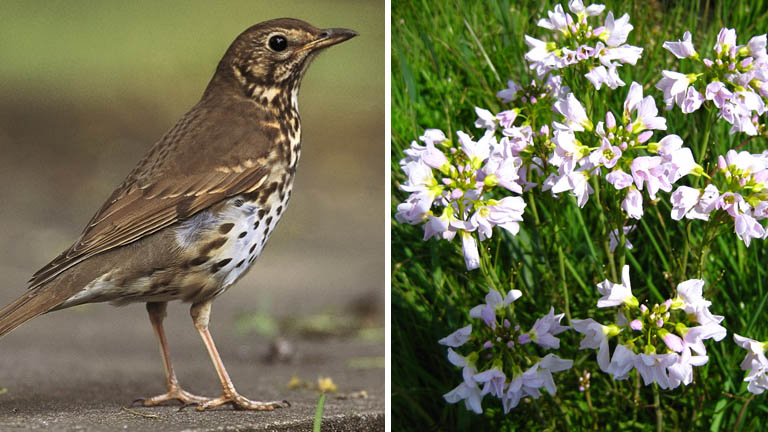April truly reminds you spring is finally here, with fresh green foliage on the trees.
Woodland flowers are emerging from the woodland floor, such as the wood anemone and ramsons (wild garlic). The woodland flowers grow so early because they need to be pollinated and require light to photosynthesise. This is why the flowers die back so soon from the dense summer tree canopy.
The sound and the variety of bird song can now be heard throughout the day. Listen out for the dawn chorus and hear the blackbirds and the song thrushes singing their hearts out. In the open countryside you will have heard the summer visiting bird, the chiff-chaff, singing for several weeks now.
In April you are likely to see cowslips and cuckoo flowers in the meadows. These plants tend to favour limestone soil and unimproved grassland meaning that it has not had any fertiliser or pesticide applied to it.
The winter visiting birds which arrived from the north and the east spend the winter time in Britain. This is because the weather is milder and food is easier to come by. They include the Bewick and Whooper swans, field fares, redwings and many kinds of ducks, wading birds and geese.
In April these visiting birds tend to leave these shores and head back up north and travel to the east. They are soon replaced by swallows, house martins and swifts.
When the weather becomes warmer, usually above 14 degrees with bright sunshine, you are likely to see several kinds of butterflies such as the brimstone, orange-tip and the small tortoiseshell. The tortoiseshell can be seen fluttering between early flowering plants in the garden.
On the heathland and in the woodland the brimstone butterfly can be seen flying around. The male is yellow and the female is a pale green and almost white. It is one of the first butterflies you will be able to see in the early spring. It lays its eggs on buckthorn or alder buckthorn, its food plant.
Once it has gone from being caterpillar (larva) eating the leaves on the plant to fatten themselves up, i evolves into a chrysalis (pupa) stage and then completes its cycle and emerges to become a butterfly.
Another butterfly you likely to see is the orange-tip butterfly which can be seen flying on grass verges, hedgerows or in meadows. It too has a food plant in which the adult butterfly lays its eggs – a wild plant called garlic mustard, commonly known as ‘Jack by the hedge’.
Mike

